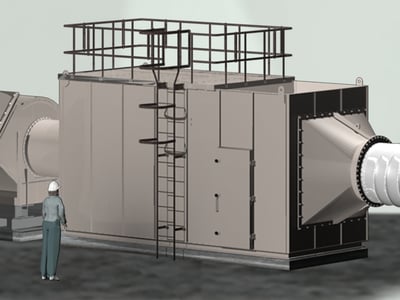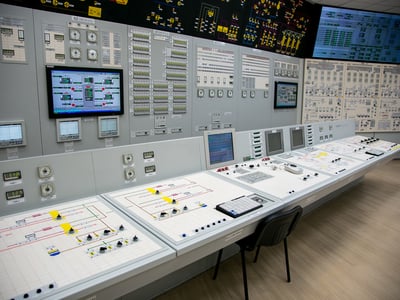Don’t choke off your business. Minimise the impact of contaminated air on surrounding communities and personnel, and the effects of corrosion on equipment, with Camfil’s gas, odour and corrosion control solutions for wastewater treatment plants.
The rising global population and global warming are combining to put extreme demands on clean water supplies. Wastewater treatment plants are critical infrastructure assets in most parts of the world.
Severe odour issues are a common problem at most wastewater treatment plants. And as cities increase in size and the protection of green spaces becomes more important, these plants are increasingly being located closer to areas of high population density. The odours are more than just a simple nuisance for your plant and the surrounding communities: they can have a huge impact on the health and safety of plant personnel and your treatment system equipment.
Unlike previous constructions, some of which were in remote green locations, modern wastewater treatment plants are enclosed as much as possible and in some cases built partially or totally underground, often close to cities.
Enclosure helps to contain odours – but it creates different problems. In particular, enclosure can lead to an accumulation of methane, an odourless yet explosive gas. So enclosed spaces must be ventilated to maintain the methane concentration at a safe level. When the ventilation air is exhausted to atmosphere, the gases responsible for the characteristic foul odour are also released. Odour control solutions are required in the exhaust air system.
A complex mixture of gases is responsible for the odour. The most notorious gases are hydrogen sulphide (the “rotten egg smell”, H2S) and mercaptans, but the foul air will also contain other organo-sulphur, ammonia (NH3) and organo-nitrogen gases.
In wastewater treatment facilities, the release of acidic gases also poses a problem. If these gases are not controlled in the supply air to control rooms, they will damage electrical gear used to regulate the complex array of process equipment such as pumps and penstocks.
Luckily, molecular filtration provides solutions for the problems associated with both contaminated exhaust and supply air experienced at treatment plants. Here are some of the benefits.

Protect the environment and people from dangerous or high concentrations of particles and molecules released by industrial processes, comply with local safety regulations and reduce operating costs of your exhaust air filtration system.

Many industries rely on electronic and electrical control equipment for safe and efficient operation. To avoid unscheduled breakdowns, the equipment must be protected from corrosion originating from chemicals used in their manufacturing processes.

Not all people who purchase our products are experts in air filtration and they shouldn’t have to be either. The purpose of Camfil City is to give everyone a chance to learn the basics of what our clean air solutions can do for them.
Air cleaners and air purifiers Food and beverage Life science and healthcare Sustainability Education and experience Innovation technology and research Virus Contamination Control Electronics and optics Air quality Commercial and public buildings Standard and regulations Manufacturing and machinery Case studies Energy and Power Systems Take a Breath
The wastewater undergoes a long process at Middelfart Wastewater, where the wastewater is treated and at the end of the process it eventually becomes purified water which is then released to the sea surrounding Middelfart. In addition, the byproducts biogas is converted to electricity and heat as well as bio-fertilizer that is being used on farmers’ fields.
Sustainability Air quality Case studies Energy and Power SystemsCamCarb VG modules with loose-fill media are robust solutions suited for make-up air (outdoor air) and recirculation air systems. The primary use is the control of acidic gases that are responsible for the corrosion of electronics and electrical equipment in heavy process industries such as pulp and paper mills, petrochemical refineries, mining and metal refining operations, and wastewater treatment plants.